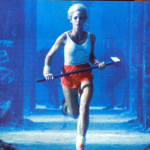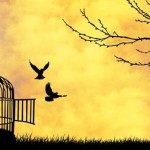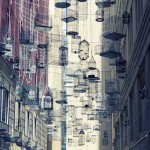Celebrating Imperfection
Imagine you’re having a dinner party for twelve?
No two guests are the same. Each is broken, in a different fascinating way. That’s what makes them interesting. That’s what creates the mountainous roads and sprawling canyons of their individuality– the reason you’re friends in the first place.
Parisian artist Sarkis created the Kintsugi plate design (featured above) to honor this individuality and commemorate the 150th anniversary of famed French porcelain maker Bernardaud.
The plates are not perfect white replicas of each other.
Perfect is boring. Perfect is impossible. Perfect is for posers.
It took me a LONG time not to desperately seek some kind of perfect weight, perfect patience or perfect poem. I think some people are born with this obsession. I certainly was. I needed everyone to think I was doing a great (NOT good) job at everything.
My therapist when I was thirty told me I had two choices. I could be perfect or happy. And since I’d never be perfect (which at the time I was offended by thinking maybe he thought this WAS possible for his other clients) I might as well shoot for happy.
The Japanese embrace the inverse of this idea about perfection.
They celebrate the flawed and imperfect in the art of Kintsugi, (金継ぎ).
When an object breaks, instead of throwing it away or trying to hide the repair (like we do in the west) so it looks like new, they highlight the imperfections, visualizing the seams as an area to celebrate and illuminate. Not disguise.
They do not use invisible Gorilla glue. They mend the cracks using lacquer mixed with powdered gold, silver or platinum. They turn flaws into fascination.
They value these breaks as simply part of an object’s history, simply an event in its life. No different than human tribulations. They are part of the cycle of living. They add character to life– be it a plate or a person.
This was deeply reassuring.
I am a successfully recovering perfectionist but embracing our cracks AND imperfections? Wrinkles, shortcomings, insecurities and freaky oddities?
We have all been broken by many things. Death of loved ones. Self-judgement. Addiction. Abandonment. Broken hearts. Sickness.
We piece ourselves back together using whatever we have.
Loss requires mourning, synthesis and rebirth. It is how we grow out of it and into our next iteration that counts.
Rock band, Death Cab for Cutie, just named their 2015 release Kintsugi, in part because the album was their first without founding member Chris Walla, who departed the band in 2014 after 17 years.
I have met my personal losses with crushing grief, intense striving and relentless questioning of my meaning, purpose and mission? They have led to my books, poetry, albums and essays.
Perhaps their artistic offerings and mine are the golden seams of our repair.





